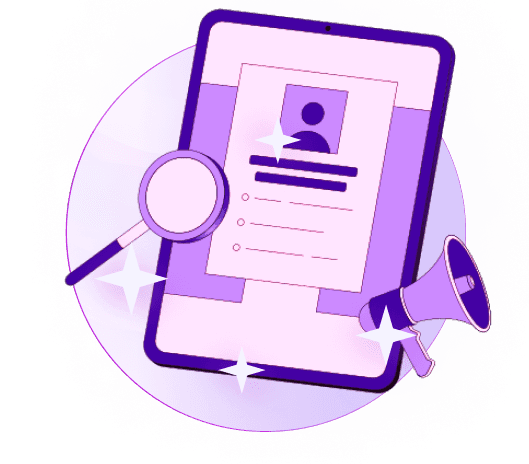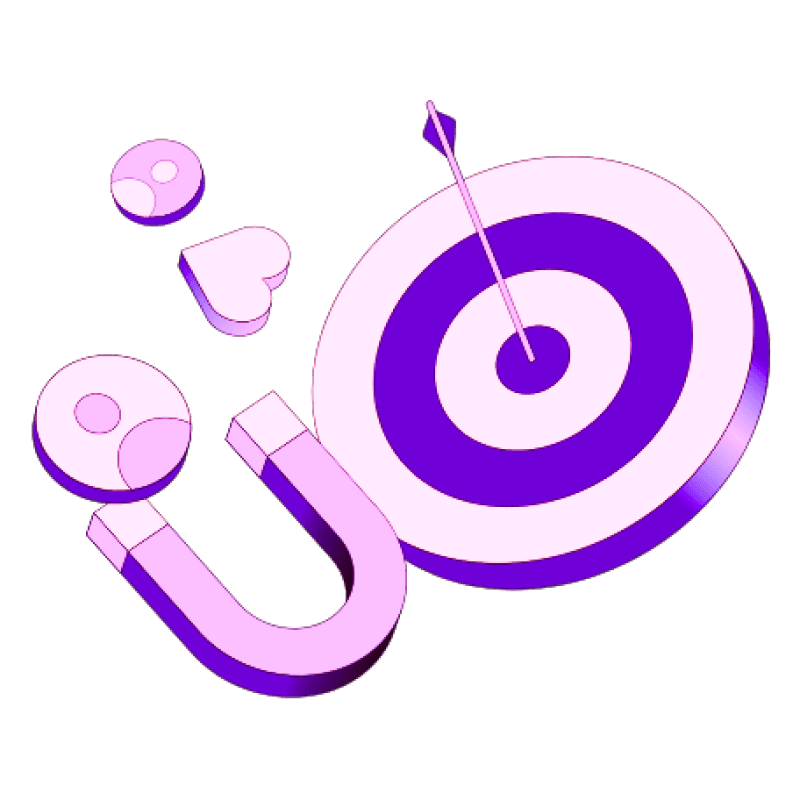Blogs
Articles

Waterfall Enrichment in Salesforce: Overview and Setup Guide
B2B data providers can't guarantee data accuracy beyond 60 to 80%. The numbers are shocking - up to 400 records could be wrong in a list of 1,000 prospects!
Waterfall enrichment creates accurate prospect profiles by tapping into multiple data providers sequentially. This data enrichment strategy in Salesforce keeps your information fresh and current. The results speak for themselves - companies have grown their pipelines by over 37% after implementing this approach.
In this piece, you'll discover the complete picture of waterfall enrichment in Salesforce - from basic concepts to choosing tools that match your team's requirements.
Why Salesforce data needs enrichment?
Your customer data starts going stale the moment you collect it. Contact records drift further from reality each day, especially in industries with high employee turnover.
The problem with outdated CRM records
B2B contact data decays at an alarming rate - 30% becomes obsolete every year. Your once-reliable database loses accuracy fast, with 60% of CRM data turning inaccurate within two years. People switch jobs, companies transform, and business details change non-stop.
Teams end up working with outdated information if Salesforce data isn't refreshed regularly. Here's a stark reality: 37 million phone numbers get recycled and assigned to new users yearly. New phone activations reach 126 million per year. In spite of that, customers rarely tell companies about their updated contact details.
How bad data affects sales performance?
Your bottom line takes a direct hit from poor Salesforce data quality. Companies lose an average of USD 15 million each year to bad data through missed opportunities and costly mistakes. Sales teams waste 21% of their time - a full workday every week - struggling with incorrect information.
Bad data hampers marketing success too. About 35% of marketers say inaccurate data hurts their ad targeting. Sales teams see their chances of closing deals plummet when they reach out using old contact details. These inefficiencies can eat away 15% to 25% of a company's operational budget.
Why single-source enrichment falls short?
Single-source enrichment might seem like an easy fix, but it comes with major drawbacks. Data vendors usually provide valid information for only 30-60% of your prospects, leaving huge gaps in your outreach potential.
Data providers often promise complete coverage but none excel in every industry, company size, or region. Their verification systems rarely cover their entire dataset thoroughly. Outdated or wrong information sneaks through because data isn't cross-checked across multiple databases.
The financial model of single-vendor solutions poses another challenge. You pay upfront whether the data works or not. That's exactly why waterfall enrichment in Salesforce offers better value - it verifies data in layers and validates across multiple sources.
What is Waterfall Enrichment in Salesforce?
Waterfall enrichment helps Salesforce users get more detailed contact information through multiple data layers. This approach has become popular among users. Rather than using just one data source, it uses a step-by-step strategy to make data more complete and accurate.
Definition and core concept
Waterfall enrichment combines several data sources in order of priority to improve and check prospect information. The name "waterfall" describes data moving through vendors like water flowing down steps. The logic works in a simple sequence:
Your system starts with partial contact information
The main data provider checks this information first
A second provider steps in if gaps still exist
This pattern continues until fields are complete or all vendors have checked
This system creates a backup plan if one tool misses information that another can find. Salesforce users can tap into strengths of multiple data sources without dealing with separate vendor relationships.
How it is different from standard data enrichment?
Standard enrichment usually gets data from one provider. Missing fields, bounced emails, or sales reps searching LinkedIn manually happen when that provider doesn't have what you need. Waterfall enrichment automatically checks the next source if one fails.
The numbers tell a clear story. Standard enrichment usually matches only 50-60% of records, while waterfall enrichment reaches 80-90% or higher. Some companies see email match rates hit 93%. A recent test showed amazing results - one provider filled ~58% of leads, a second added 26%, and a third completed 10% more. This created 94% complete profiles without manual work.
When to use waterfall enrichment?
Waterfall enrichment in Salesforce works great if you have incomplete lead data or information from different sources. This approach shines when:
Complete prospect profiles are needed to reach out effectively
Sales teams waste valuable time researching contact details
You need specific data from different regions (some providers know certain markets better)
You want better match rates while spending less on multiple vendors
Companies using waterfall enrichment have seen revenue increases exceeding 45% without changing their product, pricing, or conversion rates. Sales teams looking to improve their Salesforce data quality will find waterfall enrichment solves the common problem of incomplete CRM records effectively.
How to set up Waterfall Enrichment in Salesforce?
Setting up waterfall enrichment needs good planning and execution. My experience shows that a systematic approach works best for your Salesforce instance.
Step 1: Define your data requirements
A detailed review of your Salesforce data will help spot quality issues and critical gaps. You should focus on fields that affect business processes, such as incomplete contact information or missing firmographic data. The best way to rank enrichment targets is with a simple scoring system based on business impact:
High priority: Data gaps that affect revenue or customer experience
Medium priority: Information that improves efficiency or insights
Low priority: Nice-to-have data with minimal operational impact
Your data quality assessment should show completeness percentages, accuracy rates, and specific enrichment needs by object type.
Step 2: Choose and prioritize data vendors
Think over whether you need specialized solutions for different data types or a detailed platform. Tools like Clay blend 75+ data providers through waterfall enrichment in one credit-based marketplace. This lets you check several sources at once. The enrichment style you pick matters:
Total enrichment: Every record goes to every vendor
Waterfall enrichment: Records go to vendors in a set order until there's a match
Your budget should come first since pricing varies a lot. To name just one example, Clay has tiers from free (100 credits monthly) to USD 800.00 monthly for Pro plans with CRM integrations.
Step 3: Build the waterfall logic
Make a "gate profile" with vital attributes (like email, company, job title) that your sales team needs. The waterfall logic works this way:
Filter records with incomplete gate attributes
Send to first vendor for enrichment
Tag vendor based on match requirements
Fill empty gate attributes with returned data
If gaps remain, proceed to next vendor
Repeat until complete or all vendors tried
Note that some attributes are easier to get than others – location data is more accessible than employee count information.
Step 4: Integrate with Salesforce using APIs or tools
Set up field mappings between your enrichment sources and Salesforce. Make sure you have proper data typing and transformation rules. The sandbox environment should be your testing ground before production to avoid data corruption. Salesforce's updated opportunity contact role (OCR) object now lets users set up buying groups within standard objects. This object supports custom fields, formulas, triggers, and workflows.
Step 5: Test and monitor enrichment flows
Data validation checks should verify that enriched data meets quality standards before it enters production systems. Your dashboards should track key metrics like enrichment success rates, field completeness percentages, and data freshness.
Persana offers advanced data enrichment features that blend naturally with Salesforce.
Set up alerts for issues that show problems with enrichment sources and review your strategy regularly to check how well it works. Your teams need training to use newly enriched data fields, so create detailed documentation and standard operating procedures.
Best Tools and Practices for Salesforce Lead Enrichment
The success of waterfall enrichment in Salesforce depends on picking the right tools. You need reliable solutions that work once your enrichment strategy is in place.
Top waterfall enrichment tools to try
Persana connects to more than 75 data providers and its unique PersanaVector™ Technology gets 76% higher relevance scores than standard search methods. Clay brings together 50+ data providers on a single platform. Its waterfall enrichment checks providers one after another to find what you need.
How to choose the right tool for your team
Your budget comes first—prices start at USD 6 per 100 contacts with Lemlist and go up to USD 800 monthly for Clay's premium services. Tools like Surfe plug right into LinkedIn profiles, so check these integration features. Make sure the data coverage works for your target regions since providers often excel in specific markets. Data accuracy matters too—the best providers hit 95%+ success rates.
Training your team to use enriched data
Good documentation helps teams handle data the same way. Your team should see how enriched data makes prospecting better through individual-specific outreach. Data consistency improves when you set up validation rules. Harvard Business Review points out that poor data wastes USD 3 trillion in US company resources.
Maintaining data hygiene over time
Weekly or monthly data audits show patterns in data quality. Your data retention plans should automatically clean out old information. Salesforce's validation features work through mandatory fields and standard formats.
You might want to learn about advanced tools like Persana.ai for ongoing enrichment.
Conclusion
Waterfall enrichment is revolutionizing how sales teams handle incomplete or inaccurate Salesforce data. Traditional single-source enrichment just doesn't cut it anymore. It only provides valid information for 30-60% of prospect records. Sales teams now waste almost a full day each week dealing with bad data. Companies lose millions of dollars yearly because of these issues.
A sequential, multi-layered data enrichment strategy makes perfect business sense. The results speak for themselves. Companies using waterfall enrichment have seen their match rates jump from 60% to over 90%. This is a big deal as it means that revenue increases by 45% without any changes to products or pricing. Working with complete, accurate prospect information creates a clear competitive edge.
Our five-step implementation process helps transform your Salesforce instance from static data storage into a powerful sales tool. Start by auditing your current data. Choose the right vendors that match your needs. Build your waterfall logic and blend it with Salesforce. Set up monitoring processes to track performance.
Note that waterfall enrichment needs ongoing attention. Data becomes outdated fast - about 30% of B2B contact information changes every year. Regular updates through consistent enrichment flows will give a steady stream of current information to your team.
Your Salesforce database remains one of your company's most valuable assets. Waterfall enrichment protects this asset from data decay and provides your sales team with reliable information they need to excel.

Create Your Free Persana Account Today
Join 5000+ GTM leaders who are using Persana for their outbound needs.
How Persana increases your sales results
One of the most effective ways to ensure sales cycle consistency is by using AI-driven automation. A solution like Persana, and its AI SDR - Nia, helps you streamline significant parts of your sales process, including prospecting, outreach personalization, and follow-up.



